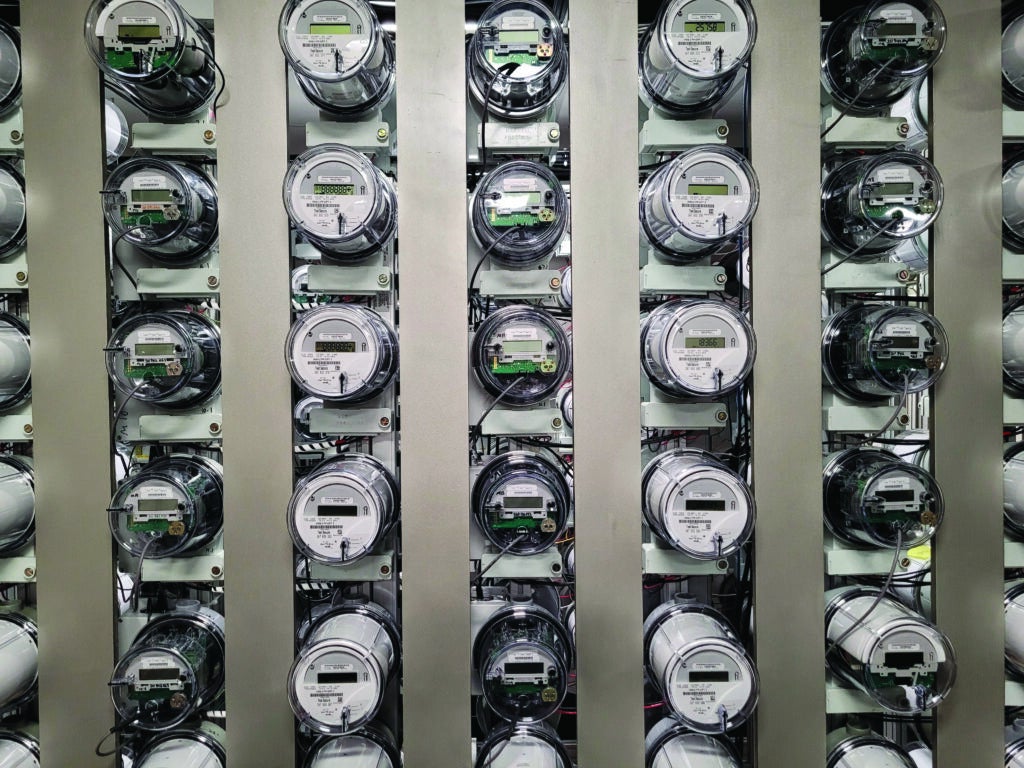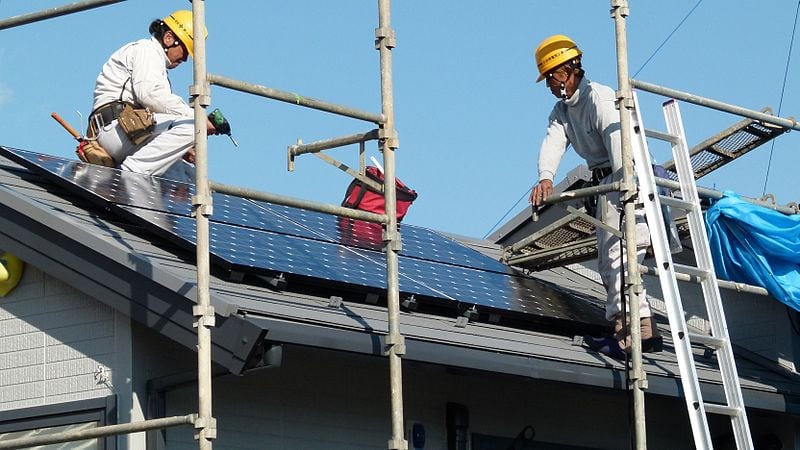With its history of solar-friendly policies over the past two decades, California set the pace for solar adoption across the U.S., leading the nation in installed solar capacity for eight of the past 10 years, according to the Solar Energy Industries Association (SEIA). In 2006, California began its Million Solar Roofs Initiative. The state achieved this goal in 2019. By the end of 2023, California generated 30.1% of its energy from the sun and had enough solar installed to power nearly 15 million homes.
California’s 49,000 MW of solar capacity is the highest of any state. The state’s early investments in solar helped commercialize the technology and drive down costs for everyone, accelerating the deployment of solar energy projects in the state, as well as in the rest of the country and even globally.
COMMENTARY
However, in the past several years, California’s policies turned sharply against distributed solar. Since 2022, the state legislature, Gov. Gavin Newsom, and the California Public Utilities Commission (CPUC) have acted in various ways to reduce the value of behind-the-meter projects, increase the costs of installing those projects, and decline to create a workable community solar program. The CPUC and Newsom have adopted the investor-owned utilities’ viewpoint that distributed solar projects shift costs onto ratepayers who do not have solar systems of their own. This “cost shift” argument is the root of California’s anti-solar shift, but a recent study showed that it is significantly overstated, finding that onsite solar in fact reduces costs for all utility customers.
As a result of the state’s policy actions, the pace of residential solar development has cratered and the pace of commercial solar project development has slowed, and the state which once set an example of effective solar policies is now fueling anti-solar arguments by utilities in other states.
What Were the Policy Changes
The biggest policy change in California was the shift from Net Energy Metering (NEM) 2.0 to NEM 3.0. The NEM 2.0 program was developed as the successor to NEM 1.0, which offered compensation for exported energy at the full retail rate of the solar customer. This policy was a key contributor to achieving the Million Solar Roofs goal and establishing a robust solar industry.
With Assembly Bill (AB) 327 in 2013, the legislature created a dual mandate, instructing the CPUC to develop a successor tariff (NEM 2.0) that ensured 1) that customer-sited renewable distributed generation continues to grow sustainably, and 2) that the total benefits to all customers and the electrical system are approximately equal to the total costs.

NEM 2.0, adopted in 2016, encompassed several changes, with the most important being a reduction in the compensation paid for solar energy that is exported to the grid. In particular, non-bypassable charges are subtracted from the full retail rate, with the rationale being that solar customers should still pay for these charges on the energy they consume from the grid. This ensured that nonparticipating ratepayers weren’t shouldering a disproportionate amount of the costs for these charges.
The NEM 2.0 decision set the stage for a revisit in future years to develop NEM 3.0. Among many issues considered based on input from the solar industry, utilities, ratepayer advocates, and others, the core issue was once again the balance of the program’s costs and the continued sustainable growth of solar generation.
With NEM 3.0, the CPUC ultimately focused on just one side of its dual mandate, siding with the utilities’ argument that onsite solar shifts costs onto nonparticipating ratepayers and deciding to dramatically reduce the export compensation rate. Instead of paying generators near full retail value for the electricity they export to the grid, the utilities pay a credit that’s based on the CPUC’s Avoided Cost Calculator (ACC), which is meant to calculate the value of distributed energy resources and quantifies values for every hour throughout the year. This approach represents a considerable devaluation of exported energy, substantially reducing the savings which solar customers experience on their utility bill. The end result is that commercial solar developers will often have to downsize projects, offsetting far less than 100% of the customer’s electricity usage, to avoid exporting a large percentage of the energy generated.
While the CPUC was implementing the NEM 3.0 policy, the legislature took a parallel action with AB 2143, in which commercial projects and most multi-family projects participating in net metering are considered public works projects, no matter whether the customer is a public entity or a private entity. This means that solar developers must pay prevailing wages and meet other requirements that would apply for projects completed at public schools or municipal facilities. While it is a good thing for workers installing commercial systems, it also increases the cost of solar systems, meaning fewer projects work financially and fewer projects are built, ultimately resulting in fewer jobs.
It can be useful to compare AB 2143 to a similar prevailing wage requirement in the Inflation Reduction Act (IRA). The IRA requires prevailing wages for projects larger than 1 MW. However, the requirement was accompanied by an increase in the incentive paid to projects. The same tradeoffs between project costs and workers’ wages exist, but the IRA resolved them by compensating projects for the higher labor costs. California’s policy imposed the cost without offering any corresponding benefit to the projects. Indeed, this cost was imposed around the same time that the value of net metering was slashed under NEM 3.0.
Simultaneously, the legislature and CPUC acted on a potential community renewable energy program. In 2022, the legislature passed AB 2316, which requires the CPUC to evaluate the existing community renewable energy programs and consider creating a new program which would spur substantial development.
A coalition of advocates, including the solar industry, lawmakers, labor unions, ratepayer advocates, and other allies developed a proposed program called the Net Value Billing Tariff (NVBT), which was largely based on the ACC. Notably, some ratepayer advocates who supported the NEM 3.0 decision joined the solar industry in supporting the NVBT proposal because they agreed that the proposal would offer benefits to ratepayers. This proposal would have resulted in community solar and battery storage projects that made affordable clean energy available to a diverse range of subscribers, while helping address the state’s urgent need for more energy storage to address late afternoon and early evening net demand peak periods.
Unfortunately, the CPUC again sided with the utilities, adopting their viewpoint that distributed solar and energy storage shift costs onto nonparticipating ratepayers, and as a result the CPUC declined to create a workable program.
Countervailing Trends Supporting Solar Deployment
If distributed solar faces nothing but headwinds from California solar policy, it benefits from two significant tailwinds. The first is the IRA, which buoyed solar development nationally by increasing the investment tax credit (ITC) for solar to 30% and extending it through at least 2033. The IRA also includes various bonus tax credits like the Energy Communities tax credit that offers a 10% bonus.
Most of California is made up of energy communities, including Los Angeles County and most of the other counties with the largest populations and commercial and industrial footprints. This combined 40% tax credit is considerably better than the 26% tax credit that was previously available, and which would have declined further without the IRA. It remains to be seen whether the Trump administration and Congress will make any adverse changes to the solar ITC, but from 2022 to present, the IRA has fueled California’s solar industry while state policy has hampered it.
The other tailwind for solar is a headwind for California as a whole. Utility rates continue to escalate to painfully high levels. This trend predated the broader post-pandemic inflationary environment, was exacerbated by it, and now continues even after overall inflation has dropped back near the 2% target. Rate increases show no signs of stopping, with the CPUC projecting further increases to commercial rates in the three investor-owned utilities (PG&E, SCE, and SDG&E) of 20-49% by 2026-2027. The kernel of good news is that this improves the economics of solar systems because it means solar customers save more on their utility bills. While NEM 3.0 reduces the utility savings considerably, and AB 2143 increases the costs of installation, the escalating utility rates make up for part of the difference.
Solar developers and customers are reimagining their solar projects to fit these new conditions. To specifically address the devalued solar exports under NEM 3.0, developers can reduce system sizes, which minimizes the amount of energy they export back to the grid. Or, by incorporating a battery storage system, customers can store excess solar energy for use during peak demand periods and still keep exports at a minimum.
If systems can be designed and implemented to adapt to these constraints, the solar industry in California will find a new baseline post-NEM 3.0 and begin growing again. Ongoing technological progress, falling equipment costs, and solar’s pivotal role in achieving clean energy targets will continue to make it an attractive investment. Plus, as SEIA noted, growth is expected to accelerate in California after a period of reduced activity from 2025 to 2027 because it expects the industry to adapt to these new policies. While the state’s policies have made it more difficult to develop solar projects, California remains the biggest market for onsite solar in the country.
—Dan Smith is vice president of Markets for DSD Renewables. He leads teams focused on RFP Origination, Community Solar, and Interconnection & Incentives.


















